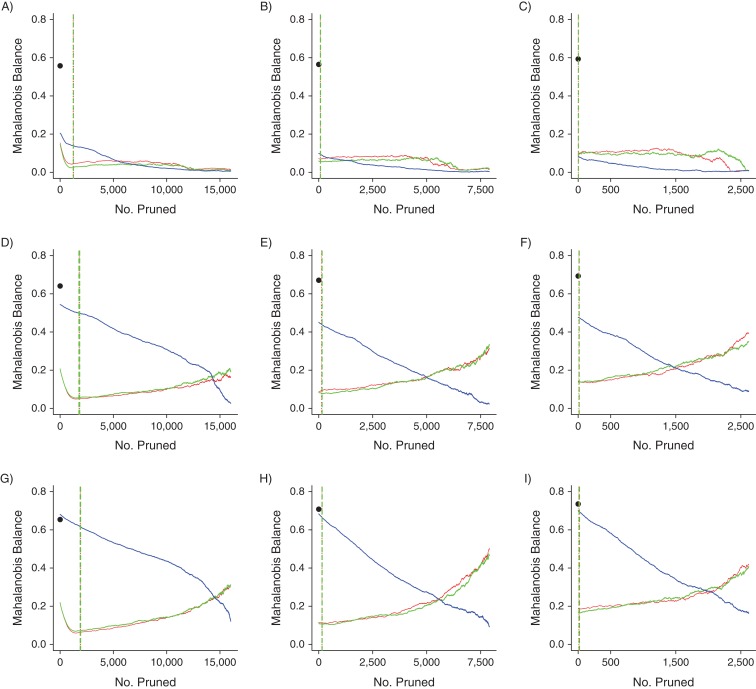Figure 1.
Mahalanobis balance metric trends for the 9 data sets based on data from Pharmaceutical Assistance Contract for the Elderly, United States, 1999–2002. A) “Small” covariate set, original index exposure prevalence (IEP); B) “small” covariate set, 50% of IEP; C) “small” covariate set, 20% of IEP; D) “standard” covariate set, IEP; E) “standard” covariate set, 50% of IEP; F) “standard” covariate set, 20% of IEP; G) “large” covariate set, IEP; H) “large” covariate set, 50% of IEP; I) “large” covariate set, 20% of IEP. The black dots indicate the Mahalanobis balance values of the prematched data sets. Red lines indicate propensity-score nearest-neighbor matching trends; green lines indicate propensity-score digit-based greedy-matching trends; and blue lines indicate Mahalanobis-distance matching trends. The dotted and dashed vertical lines (for propensity-score nearest-neighbor matching and propensity-score digit-based greedy matching, respectively) mark the 6 points at which the propensity score matching trends first met the 0.05, 0.025, and 0.01 absolute propensity score distance caliper criteria (vertical line colors correspond to trend colors). The caliper criteria were always met in the order 0.05, 0.025, and 0.01 during the pruning process.

